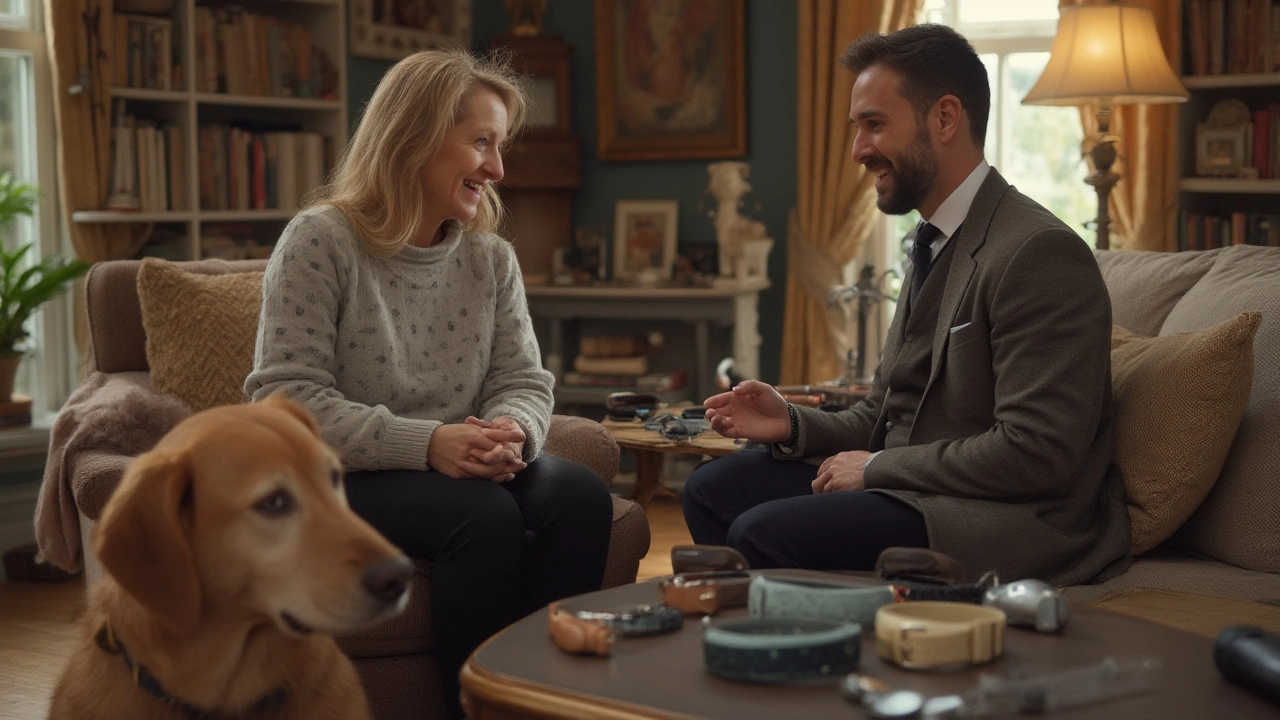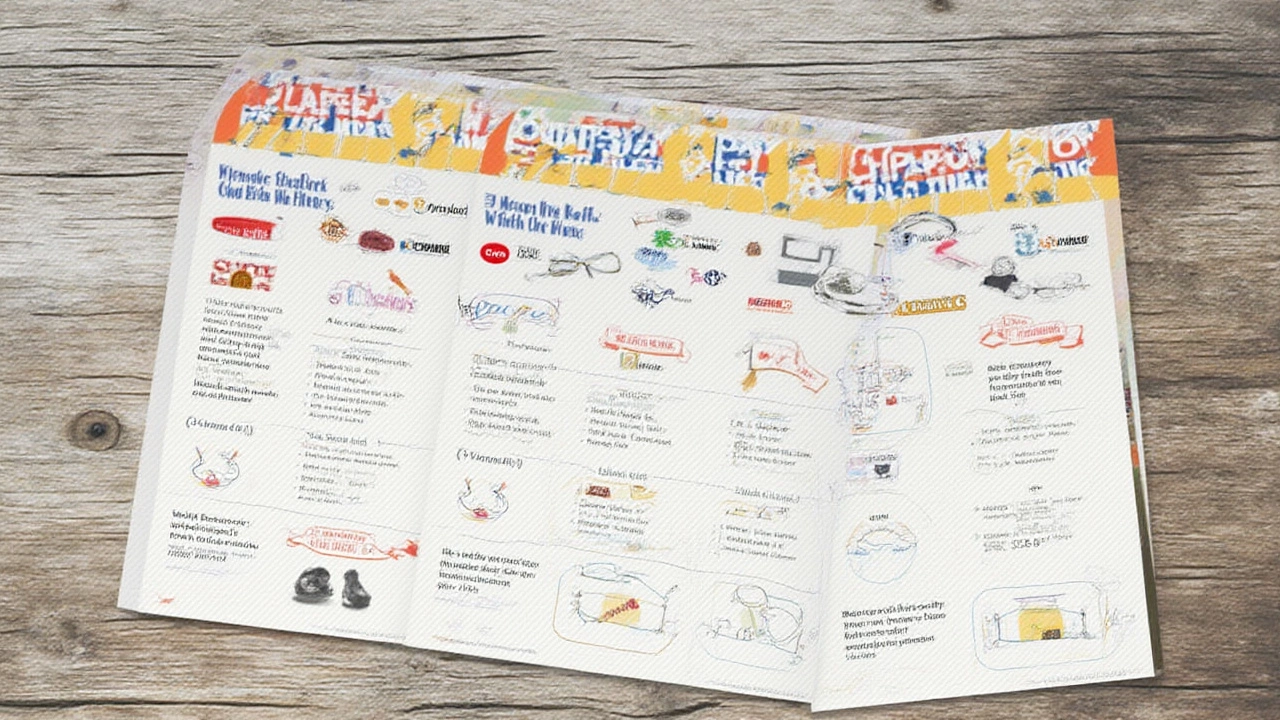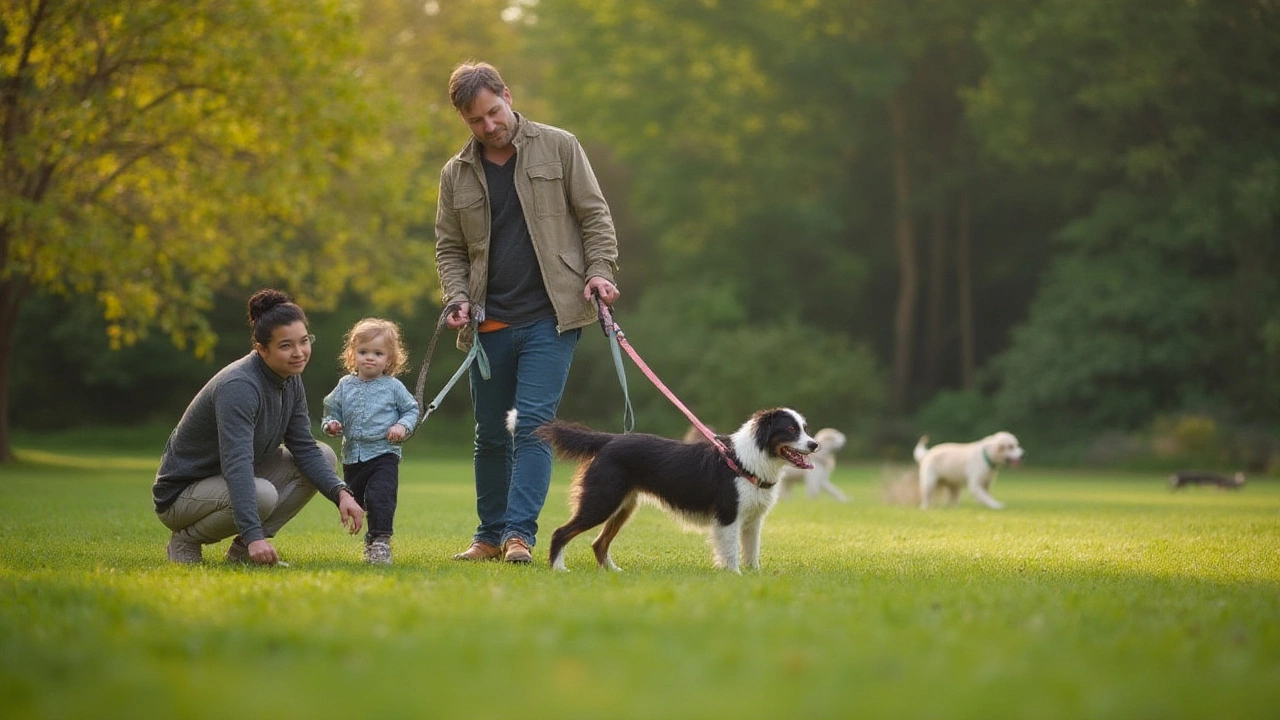You’d think picking a dog collar would be as easy as snagging the cutest one off the rack. But ask any pro dog trainer, and you'll quickly realize how much the right collar can transform your walks and training sessions. The wrong one? Frustration, discomfort, even setbacks for your pup—and you. Science is shining a spotlight on how modern trainers are leaving the old-school gear behind in favor of collars designed for safety, comfort, and real learning. If you’re wishing your dog would stop yanking, pulling, or choking on the leash, get ready for a total rethink, backed by actual dog trainers who know their stuff.
Trainer-Approved Collars: What Experts Actually Use
Ask five trainers what collar they swear by, and you’ll probably hear about flat collars, martingale collars, and front-clip harnesses. Choke chains, prong collars, and shock collars—once a staple—are quietly collecting dust. Why the change? Trainers have seen firsthand how dogs learn best: not with pain or fear, but with clear, gentle guidance. The American Veterinary Society of Animal Behavior and the Association of Professional Dog Trainers both recommend positive reinforcement and discourage aversive collars, pointing to reduced stress and better long-term results.
Flat collars are the classic go-to. Simple, adjustable, usually made of nylon or leather, they’re safe for most dogs who don’t pull. But if you’ve got a strong puller or a flat-faced breed (like a French Bulldog), even a flat collar can put pressure on the trachea. Trainers often reach for a martingale collar in these cases, especially for breeds with narrow heads (hello, whippets and greyhounds), because it tightens just enough to prevent slipping out but won’t choke. If they need even more control, it’s the front-clip harness—not a collar at all. These nifty designs let you steer your dog’s chest gently, which can make a huge difference with jumpy pups or those who think every squirrel is an invitation to run a marathon.
Martingale collars have a following for a reason. A 2023 study in the journal Animals found that martingales reduce escape attempts by 80% compared to flat collars. But here’s the kicker: trainers use martingale collars only under supervision and for walks, never for unsupervised wear, since the tightening feature can snag during play. Every time a new dog comes in for a session, trainers check for fit—two fingers should slide under the collar even at its tightest.
So, what about shock collars? Any trainer keeping up with science is steering clear. Dogs learn way faster when you set them up to succeed and reward good choices. In fact, research from Lincoln University showed that when pet dogs were trained with shock collars, they were more stressed, vocalized more, and learned more slowly than those trained with treats. Pros know that you can absolutely have a well-behaved dog without anything harsh around their neck.
Types of Collars—and When to Use Each
Staring at a wall full of collars can feel overwhelming. Trainers break it down like this:
- Flat collars: Basic and comfortable for dogs who walk nicely on leash. Great for holding ID tags and microchip info. Not ideal for persistent pullers or escape artists.
- Martingale collars: Good for sighthounds and dogs that slip their collar. Safer tightening with limited choke. Best for walks, not for all-day wear.
- Head collars (like the Gentle Leader or Halti): These loop gently over the nose and allow you to guide the dog’s head. Work wonders for big, reactive dogs but take some getting used to—just like a kid wearing glasses for the first time.
- Front-clip harnesses: The gold standard for dogs that pull. By attaching the leash at the chest, you redirect momentum back to you.
- Traditional back-clip harness: Soft and comfortable, but beware—they can make pulling worse for strong dogs, since there’s no steering action up front.
Here’s a quick table comparing features trainers care about:
| Type | Recommended By Trainers? | Best For | Risk |
|---|---|---|---|
| Flat Collar | Yes | Calm walkers, ID tags | Can injure neck if dog pulls hard |
| Martingale | Yes | Slippery-headed breeds | Shouldn’t be left on unsupervised |
| Head Collar | Yes, with guidance | Big pullers, reactive dogs | Can cause neck strain if jerked |
| Front-Clip Harness | Yes | Pullers of any size | May rub under legs if not adjusted properly |
| Back-Clip Harness | Sometimes | Small dogs, brachycephalic breeds | Can encourage pulling |
| Choke/Prong/Shock | No | N/A | High risk of pain, fear, injury |
Trainers stress that fit is just as important as type. An ill-fitting collar, no matter how “safe,” can create rubbing, escape routes, or accidental injuries. One quirky tip: after holidays, trainers see more chafed and lost-dog calls—people swap collars for new ones that just don’t fit right. Always check fit if you get a new collar.

Collar Myths Debunked: What Doesn’t Work?
A surprising number of people still think a “sturdy” prong collar is the best bet for strong dogs, or that their dog will only learn if the collar “corrects” them. But decades of research and hands-on experience have blown up these myths.
First myth: “Dogs have thick necks and don’t feel it.” Not true. A dog’s neck is packed with delicate nerves, glands, and the trachea. That’s why choke, prong, and shock collars can cause long-term damage—injuries you won’t spot until later. According to a 2023 report by the American Animal Hospital Association, neck and spine injuries from aversive collars are a leading reason for vet visits after training fails. Trainers see these firsthand and don’t want owners learning the hard way.
Second myth: “My dog only listens with a prong collar.” In reality, a dog might stop pulling to avoid pain, but they haven’t learned what you do want. They’re just confused or scared. Trainers see dogs bounce back incredibly fast with positive methods—one study found that 85% of reactive dogs trained with treats and front-clip harnesses became calmer in public spaces, without any force. It’s not magic; just science and patience.
Third myth: “Head collars are cruel.” Some owners think these look like muzzles or might hurt, but trainers explain that head collars, when properly fitted and introduced with treats, cause no pain—just steering power. The trick is slow introductions and pairing with tasty rewards so your dog associates the gear with good stuff. Dogs given time to adjust often strut around like royalty in their head collars after a week or two.
Last—yet persistent—myth: “A collar alone will fix bad behavior.” Trainers wish! A collar is just a tool. Success comes from clear, consistent training, not a miracle accessory. The right collar makes it easier for you to communicate and keep your dog safe. But you’ll always need patience, time, and high-value treats.
Training Success: Tips for Choosing and Using Dog Collars
First, skip anything that looks intimidating. If a collar needs a manual to untangle its spikes or claims it’s “guaranteed to stop all bad behaviors,” that's a red flag. Trainers recommend starting with these steps:
- Match the collar to your dog’s neck, head shape, and walking style. Sighthounds? Go martingale. Big pullers? Try front-clip harnesses. Calm, small dogs? Flat collars can be just fine.
- Check the fit. A good rule: two fingers under the collar, snug but not tight. A too-loose collar is an escape risk, too tight is a safety hazard.
- Introduce new gear slowly. Put it on while feeding treats or playing a favorite game. Five minutes the first day, a little longer each day, and don’t rush to walks until your dog acts confident.
- Swap out for heavy exercise or at home. No collar is truly “chew-proof,” and even martingales can snag during rough play. Take collars off during unsupervised time or rowdy playdates.
- Go for quality, especially for active or strong dogs. Cheap buckles and stitching can break at the worst moment. Trainers usually pick brands with double and triple stitching and metal fittings.
- Reward good behavior. Don’t rely on the collar to do the work—keep treats handy to reinforce every good choice. Positive vibes are contagious.
- Revisit fit and condition every few weeks. Puppies outgrow collars fast, and even adult dogs can lose or gain weight.
- Ask your local trainer for a fitting demo if you’re unsure. Many training classes now offer fitting checks free at the first session, because a loose collar puts everyone at risk.
Trainers say the secret to quick, happy progress is pairing the right collar with frequent praise and clear boundaries. Most “bad behavior” on walks comes from confusion, stress, or overexcitement—not defiance. A comfortable, well-chosen collar makes communication clearer, builds trust, and lets your dog's real personality shine. For high-energy breeds, having the right collar can be the difference between a frustrating outing and a calm, enjoyable stroll.

Collar Trends in 2025: What’s Gaining Ground?
Smart collars and health trackers are having a moment. Dog trainers are watching closely but urge a little caution. While GPS collars can help locate an adventurous escape artist, trainers remind owners these aren’t a substitute for good recall training or a secure fit. Similarly, vibration collars that “buzz” as cues—when used correctly and paired with rewards—may help with hearing-impaired dogs but shouldn’t be used as punishment.
Sustainable materials are big now. Collars made from recycled PET plastics, bamboo fiber, and even cactus leather are landing on trainers’ favorites lists. Not just for eco-points—dogs with skin sensitivities benefit from hypoallergenic, plant-based collars. In fact, a 2024 survey by The Dog Federation of North America found that over 30% of trainers now recommend sustainable or hypoallergenic gear by default for new puppies.
Color trends don’t escape notice, either. Trainers find high-visibility or reflective collars crucial for evening walks—especially in urban areas where accidents spike after dusk. Neon, bright orange, and luminous yellow are in, not just for fashion but to keep your dog visible to drivers and cyclists. Practical wins over pretty every time in a trainer’s book.
Technology isn’t replacing classic wisdom just yet, though. Trainers emphasize that no device should take the place of real communication and consistent expectations. Even if you spring for a collar with bells and GPS whistles, it’s your daily connection and cues that shape a great dog-human bond.
Bottom line? The best collar is the one your trainer (and your dog) likes, fits safely, and helps both of you enjoy each walk more. Today’s trainers are leading a quiet revolution—swapping harsh collars for gear built around comfort, safety, and trust. That’s how good dogs and happy humans happen.
